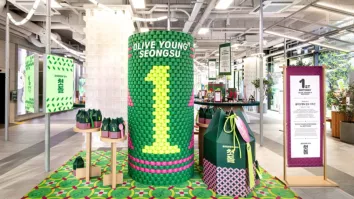
Young people in Asia feel more connected to cultures in other countries
A NEW study has found that 39% of young people in Asia feel more connected to another country’s popular culture than that of their own country.
The Global Culture Forecast report by cultural insights strategist Cassandra showed that young people in Indonesia are the most connected with popular culture from other countries at 56%. They are followed by South Korea (39%), India (36%), China (33%) and Japan (32%).
This trend is also forecast to grow in some countries, with nearly half of young people in China (48%) and India (44%), and a third (30%) in Indonesia, saying that it has become more important in the past year for them to follow global popular culture. Only 17% of young people in Japan and South Korea said they had felt this way in the past 12 months.

The blurring physical boundaries of cultural transmission might be an opportunity for retailers to expand internationally.
When it comes to the popular culture that young people consume from other countries, music, movies, and TV are top choices. More than half (55%) of young people in Asia listen to music from other countries, half (54%) watch movies from other countries and another one-third (36%) watch foreign TV shows.
Outside of entertainment, one-third (36%) look internationally for fashion and style trends, 28% adopt other countries’ beauty and grooming trends and 30% of young consumers in Asia follow sports teams or athletes from another country.
Alena Rossini, managing director of Cassandra in Asia, said: “As young people in Asia see it, their geographic location shouldn’t determine what they pay attention to or care about. They are more open than ever to embracing popular culture from countries they don’t have a previous connection to. They are becoming country-blind, investing their time, energy and money in a culture that aligns with their interests and values, regardless of where it comes from. This perspective is translating to how they define their sense of community.”
Veronica Wang, associate partner, OC&C Strategy Consultants, told Retail Asia how this trend can bring opportunities as well as challenges to retailers and brands. “Since young consumers now have a very clear idea of the culture they follow and would likely choose brands representing that culture, adopting a ‘consumer-centric’ model is becoming more and more critical. Retailers have to be crystal clear about who their target consumers are, continuously listen to them, understand what these consumers need, like and value, and cater brand messages and offerings that resonate well with them,” she said.
On the other hand, the blurring physical boundaries of cultural transmission leads to more opportunities in other countries in approaching consumers who were previously difficult to reach, and therefore it might potentially be a smarter way for retailers to expand their business internationally. Wang added: “As young consumers are now more open and have easier access to global culture, retailers can start engaging with international consumers even before they have physical presence in overseas markets.”
The study is based on interviews with over 9,500 young people aged 14-34 across 16 countries, including China, India, Indonesia, Japan and South Korea. It provides extensive analysis on various aspects of popular culture, including food, music, film, fashion, art and sports.



















 Advertise
Advertise






